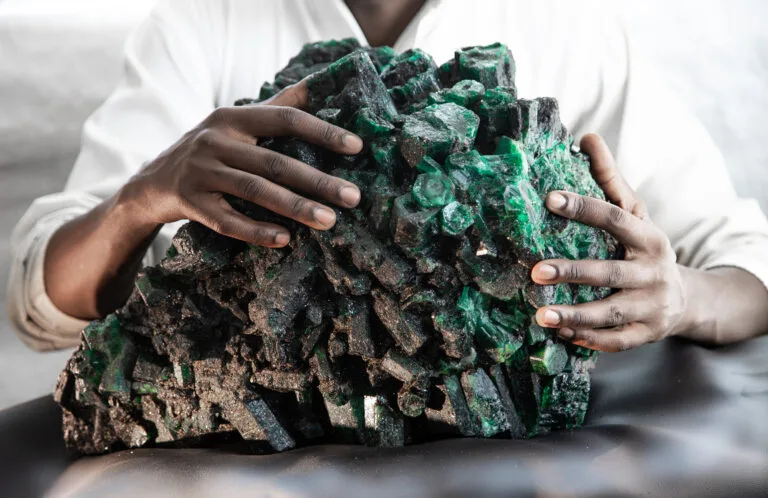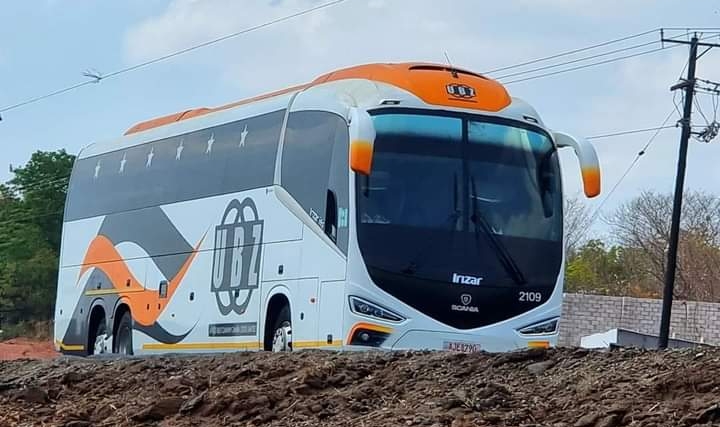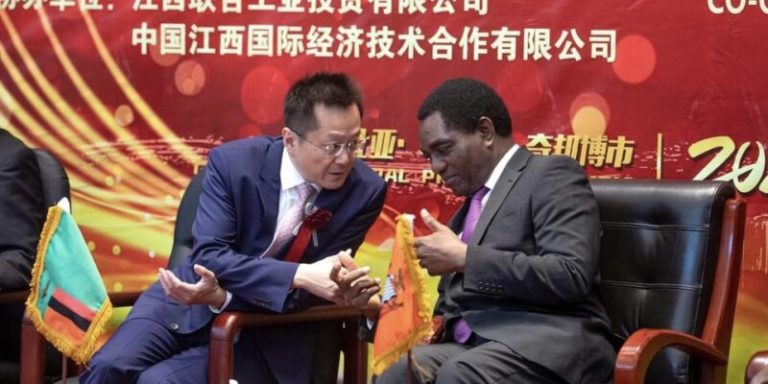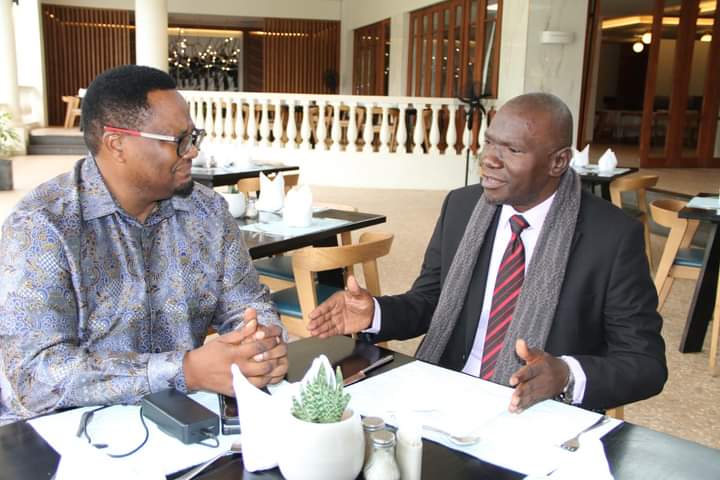
Discovered at the Kagem emerald mine in Zambia in March 2020, the Kafubu Cluster is a colossal cluster of emeralds. Close inspection of the 37,555-gram (187,775 carat) cluster reveals that it contains very little matrix or other minerals, meaning the piece is almost entirely made up of emeralds, which, given its sheer size and formation, makes this a very rare find indeed.
…under capable political leadership! To put it into context, high grade emerald can cost between $4K and $40K per gram or roughly $4M to $40M per Kg. Zambia produces between 2 tonnes and 3 tonnes of per year.
By Mpandashalo Mwewa | Chief Editor.
Lusaka, April 19 – There are several reasons why Zambia, despite having abundant precious minerals like emeralds and sugilite, remains a poor country. The biggest reason, however, is leadership failure in that for decades, Zambia has only seen its minerals as commodities instead of catalysts of development through diversification and value addition.
Also Read: Zambia surpasses Chile to become the world’s largest emerald producer!
To begin with, let me look at some key possible reasons behind Zambia’s under-developement that presidential candidates in the 2026 General Elections must commit to addressing to kick-start sustainable economic development:
◾Dependency on the export of minerals as commodities: Zambia’s economy heavily relies on the export of raw minerals, particularly copper. Depending too much on a single commodity makes us vulnerable to fluctuations in global commodity prices. When prices drop, as was the case during the ZCCM era, Zambia’s economy suffers, leading to economic instability and poverty.
◾Weak institutional framework, leading to corruption: Corruption, mismanagement, and weak governance have plagued Zambia for years. These issues have hindered the effective management of revenues generated from mineral resources. Corruption diverts resources away from public services, infrastructure development, and poverty alleviation programs, perpetuating the cycle of poverty.
◾Lack of economic diversification: Our overreliance on mining has stifled economic diversification. Our economy is not sufficiently diversified to withstand shocks in the global commodity market. Diversification into other sectors such as agriculture, manufacturing, and services is essential for sustainable economic growth and poverty reduction.
◾Infrastructure challenges: Inadequate infrastructure, such as goods railway transportation networks, energy supply, and water and sanitation systems, hinders economic development. Although the Patriotic Front Government tried to accelerate infrastructure development, infrastructure remains poor, limiting the country’s ability to attract investment, create jobs, and improve living standards for an ordinary Zambian on the streets.
◾Limited human capital development: Limited investment in education, healthcare, and skill development has left our country with a workforce that may not be adequately equipped to drive economic growth and innovation. Limited access to quality education and healthcare further exacerbates poverty and inequality in the country.
These are the fundamental issues that our political leadership at the highest level must preoccupy themselves with instead of commissioning communal toilets because addressing these challenges requires comprehensive reforms in governance, economic policy, infrastructure development, and human capital investment at the highest level to sustainably unlock Zambia’s economic potential and improve the well-being of an ordinary child in rural Zambia.
Also Read: Leadership failure: The sausagegate scandal is just a tip of the iceberg!
In this article, I labour to explain how a focused political leadership can leverage our emeralds, without even selling copper mines to diversify our economy and address the issues that I have earlier mentioned. First and foremost, we need to mine the emerald natural resource as a nation through ZCCM-IH as there is nothing complex about emerald mining.
To put it into context, high grade emeralds can cost anywhere from $4,000 to $40,000 per gram. This equates to roughly $4M to $40M per kilogram.
Although prices can fluctuate significantly based on market demand and the characteristics of the individual stones, why has our political leadership concentrated on mining tonnes and tonnes of copper for export as raw materials at $8,000 per tonne when a tonne of emeralds would earn us between $4bn and $40bn? Zambia produces between 2 tonnes and 3 tonnes of emeralds per annum.
Also Read: Zambia is not benefitting from its mineral resources.
In my view, precious minerals such as emerald, sugilite and gold should only be mined by ZCCM-IH and Gold should be stock piled to be part of the national treasury reserve currency. Zambia, consequently, would develop in a period of less than 10 years with proper policies in place that would prioritise economic development by Zambians.
Emerald mining through ZCCM-IH can play a significant role in the development of our country in various ways. By implementing the following strategies, Zambia can harness the potential of its emeralds resources to diversify its economy, create sustainable livelihoods, and contribute to overall economic development and prosperity:
◾Value addition: We can add value to our emerald production by investing in cutting, polishing, and jewelry manufacturing within the country. This value addition can increase the revenue generated from emerald exports and create job opportunities in the downstream industries.
◾Promotion of tourism: We can promote emerald mining as a tourist attraction, offering guided tours to emerald mines, showcasing the mining process, and educating visitors about the significance of emeralds. This can boost tourism revenue and create a market for locally produced emerald jewelry and souvenirs.
◾Development of a gemstone industry cluster: We can also develop a gemstone industry cluster that brings together emerald miners, manufacturers, designers, and retailers to collaborate and innovate. This cluster can facilitate knowledge sharing, technology transfer, and market access, fostering a competitive and sustainable gemstone industry.
◾Investment in skills development: We can invest in training programs and vocational education to develop a skilled workforce in gemstone mining, cutting, and jewelry manufacturing. Skilled workers are essential for maintaining high-quality standards, increasing productivity, and driving innovation in the emerald industry.
◾Improvement of infrastructure: With the expected annual revenues that I just shared, we can afford to enhance infrastructure, such as transportation networks, energy supply, and telecommunications. Efficient infrastructure can spur economic growth in other sectors by reducing production costs, improving logistics, and facilitating access to markets, both domestically and internationally.
◾Strengthening governance and regulatory framework: Ensuring transparency, accountability, and good governance in the emerald sector is essential for attracting investment, fostering trust, and mitigating risks associated with illegal mining and smuggling. A robust regulatory framework can help regulate the industry, protect the environment, and ensure fair practices.
Also Read: Canadian looting of Zambian resources led to debt crisis.
“In 2006, Zambian royalties from copper represented about $24m on $4 billion worth of copper extracted. The taxing of the mining companies wasn’t any better, too. Between 2000 and 2007, Zambia exported US$12.24bn in copper but the government only collected US$246m in tax.”
Overall, the development of the emerald mining industry in Zambia has the potential to provide significant economic and social benefits to the country, as long as it is managed responsibly and sustainably. In my opinion, copper mining must be for the local industry as a raw material. If exported, it should not be in raw material form but processed copper such as copper wires.
About Our Advocacy: Woodpecker’s Digest is an online portal for news analyses and commentaries on topical issues of national interest and for articles on personal development and health! Journalism maintains democracy. It is a great tool for progressive social change!
©2024 Woodpecker’s Digest.
Putting news into perspective









Emeralds can really boost our economy. Where is the hiccups and what remedy can we use for us Zambians to benefit?